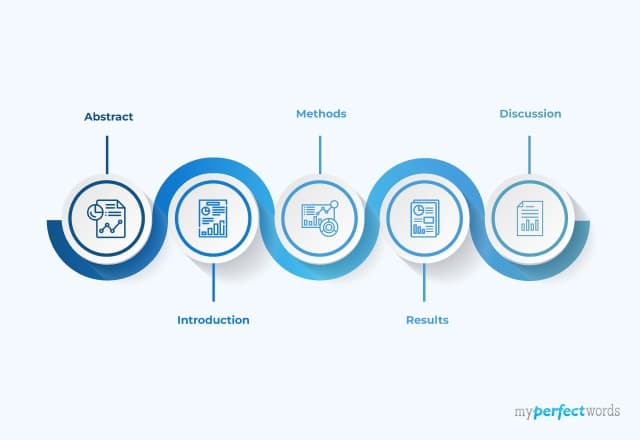Writing lab reports can be a challenging task for students. Many struggle with structuring their reports effectively and presenting their findings in a clear and concise manner.
This challenge often leads to lower grades and frustration among students, hindering their academic progress and confidence in scientific writing.
In this blog, we provide a comprehensive guide tailored specifically for students.
We will walk you through the process of creating an outstanding lab report step by step to convey the experiment's purpose.
Let's embark on this journey of improving your lab report writing skills together.
On This Page![]()
- 1. What is a Lab Report?
- 2. Lab Report Format
- 3. How to Write a Lab Report?
- 4. Lab Report Examples
- 5. Lab Report Writing Tips
What is a Lab Report?
A lab report is a structured document that provides a detailed account of a scientific experiment or investigation.
It serves as a crucial tool for researchers and students alike, enabling them to communicate their findings, methods, and conclusions in a standardized and organized format.
Lab reports vary in format and requirements depending on the specific discipline and institution. They play a vital role in the scientific community by allowing others to evaluate and replicate research, contributing to the advancement of knowledge in various fields.
Lab Report Format
The lab report format is a critical element that ensures the clear and organized presentation of your scientific findings.
While specific requirements may vary between institutions and disciplines, here's a general lab report template to help you structure your lab report effectively:
Lab Report Format Example Title Page: Include the title of the report. Your name and the names of any collaborators. Date of the experiment and the date of report submission. Course or lab section number. Abstract: A brief summary of the entire report, typically 100-200 words. Highlights the main objective, methods, results, and conclusions. Introduction: Describes the purpose and significance of the experiment. States the research question or hypothesis. Provides any relevant background information. Methods: Detailed description of the experimental procedures. Lists equipment, materials, and chemicals used. Explains the step-by-step process of raw data collection. Results: Presents the data obtained during the experiment. Utilizes tables, graphs, figures, and charts to illustrate findings. Labels and captions for clarity. Discussion: Interprets the results and their implications. Analyzes the data, addressing whether it supports the hypothesis. Compares findings with existing literature or theories. Discusses sources of error and their potential impact. Conclusion: Summarizes the key findings concisely. Restates the hypothesis and its acceptance or rejection. Offers insights into the broader significance of the research. References: Cites all sources, including lab notebook, textbooks, research papers, and other references used in the report. Follows a specific citation style (e.g., APA, MLA, Chicago) as per your institution's guidelines. |
Formatting Guidelines
Follow specific formatting instructions from your instructor or institution regarding font, margins, spacing, and citation style.
- Use a clear and legible font, such as Times New Roman or Arial, in 12-point size.
- Double-space the entire report for readability.
How to Write a Lab Report?

Writing a lab manual is a tricky job as it requires several important parts. No matter which type of lab report you are writing and for which level, there is a basic writing structure that works for all.
When a student writes a report for the first time, it is essential to learn the basics. Without knowing the basics, the writing process can be challenging.
The lab report writing consists of the following information:
- The context of the study.
- Contains pertinent background and information about the experiment.
- It is written in the passive past tense. Make sure you do not use present tense.
- Contain the methods applied.
If you are writing a lab report for your academics and instructor, make sure you are taking the right writing steps. The following are the steps in which a lab report is written.
Identify the Primary Goal
Before starting your lab report, make sure you understand the experiment.
- What scientific question are you trying to answer?
- What is the overall goal or purpose of your experiment?
Research and Background
To provide context for your experiment, research the relevant background information. This includes reviewing scientific literature, theories, and previous studies related to your topic.
Understanding what others have done in your field can help you position your experiment in the broader scientific context.
Write the Title and Abstract
The title and the abstract are the two most visible and striking parts of a lab report cover page.
The title should be concise but descriptive, giving readers an idea of what your experiment is about.
To make your title interesting, make sure that it reflects what you have done in the experiment and some interesting findings.
For your abstract, keep it concise. It should be based on just one paragraph of 200 words.
The abstract of a lab report contains the following information:
- The primary motivation or purpose of the experiment
- How does your experiment differ from the previous one?
- The methodology used to obtain experimental results
- Noteworthy findings, if any
Carefully Craft Introduction
The lab report introduction serves as a roadmap for readers, answering key questions and providing essential context.
- What is the setting of the issue or problem?
- What is the issue you are trying to solve?
- Why is the problem important to discuss?
- Is the problem solved, or is it still unsolved?
It outlines the problem's setting, the issue being addressed, and its significance.Additionally, it states whether the problem has been solved or remains unsolved.
In this section, you'll find information about:
- Why was the problem so difficult to solve?
- How did the writer solve the problem?
- The circumstances in which the findings and results are applicable
- Major key results
- How have you organized your report?
Materials and Methods
In this section of your lab report, list all the materials, equipment, and chemicals used in your experiment. Include specific details such as quantities and measurements.
Provide a step-by-step account of how the experiment was conducted. This should be detailed enough for someone else to replicate your experiment.
Example: In our experiment, we used:
We prepared a saltwater solution by dissolving 20 grams of NaCl in 500 mL of distilled water. Each beaker contained 50 mL of this solution, which we heated to 40°C using a Bunsen burner and recorded the time it took to reach that temperature. |
Data Collection
During the experiment, record all data, observations, and measurements. Ensure accuracy and precision in your data collection.
Example: We collected data by:
|
Results
In the results section, present your data in a clear and organized manner. Use tables, graphs, or charts to help readers visualize the data.
Label and caption each figure or table appropriately to explain what it represents.
Discussion
In the discussion section, interpret what your results show. Explain the meaning of the data in the context of your research question and hypothesis.
Address any unexpected results and discuss potential experimental errors. Compare your findings with existing scientific knowledge and theories.
Conclude the Lab Report
Summarize the main findings of your experiment and their implications. Restate your hypothesis and indicate whether it was supported or rejected.
Explain the broader significance of the results of your research and how it contributes to the field.
Provide References
List all the sources you consulted during your research.
Cite them according to a specific citation style (e.g., APA, MLA) as per your institution's guidelines.
Lab Report Examples
To give you a better understanding of the lab reports’ writing process and structure, we have gathered some helpful examples.
Go through these examples and write your lab report accordingly.
Lab Report Writing Tips
Writing a lab report can be challenging, but with the right approach, you can create a clear, concise, and informative document.
Here are some essential tips to help you craft an effective lab report:
- Understand the Purpose: Before you start writing, grasp the purpose of your experiment. This way the reader can understand the research question, hypothesis, and the significance of your findings.
- Follow the Structure: Adhere to the standard lab report structure. Each section has a specific purpose; make sure to address them all.
- Be Clear and Concise: Use clear and straightforward language to convey your ideas. Avoid unnecessary jargon and jumbled sentences.
- Detail the Methods: Be specific about the materials, measurements, and techniques employed. This section should be precise enough for someone else to replicate your experiment.
- Present Data Effectively: Use graphs, charts, tables and figures to present your data visually. Make sure to label all figures and tables appropriately, and include units for all measurements.
- Interpret Results: In the discussion section, interpret your results and explain their significance. Compare your findings with existing literature and theories. Address any discrepancies or unexpected outcomes.
Lab reports can be challenging if you are writing them for the first time. If you want your report to be impressive, make sure it includes an overview of the complete experiment and an objective interpretation of the results.
To sum up,
Following this guide will let you plan your experiment and write its report in the most professional and accurate manner.
If you still find it difficult to write your lab report, get professional assistance from our 'write my lab report' service.
MyPerfectWords.com is committed to providing the best reports for all fields and types of assignments. Our expert writers are trained to write accurate and precise lab reports to help you out.
Moreover, if you are planning to 'pay someone to do my essay', get expert help at affordable prices from us now!
Frequently Asked Question
How many pages is a lab report?
A typical lab report should not have more than 10 pages. It needs to be single-spaced, and the font needs to be 12 points.
What is the main use of lab reports?
A laboratory report is a formal record of an experiment. It should discuss the objectives, procedures, and results. If you want to do the same experiment as someone else, they will know what to do because of your report.

Write Essay Within 60 Seconds!
Use our AI tool to generate high quality essay
WRITTEN BY
Amanda M.
Columbia journalism grad writing speeches. I craft clear, quotable messages for media moments.



